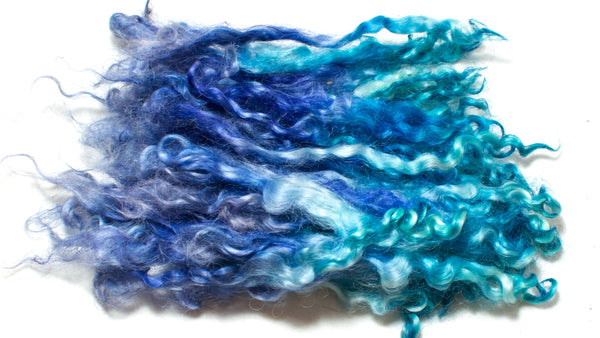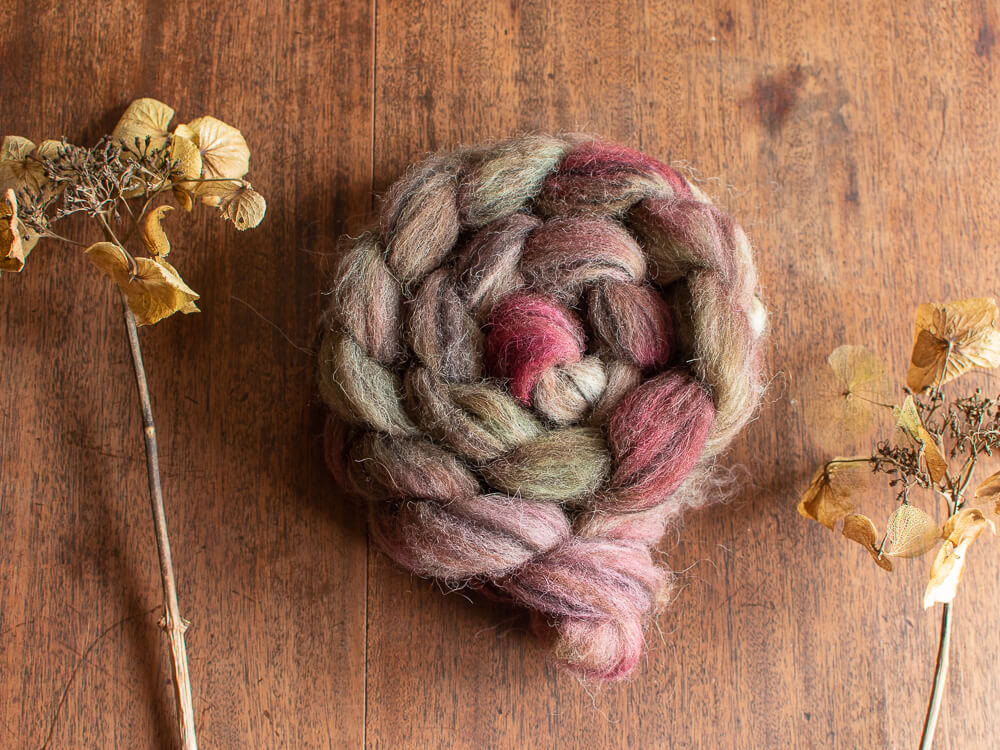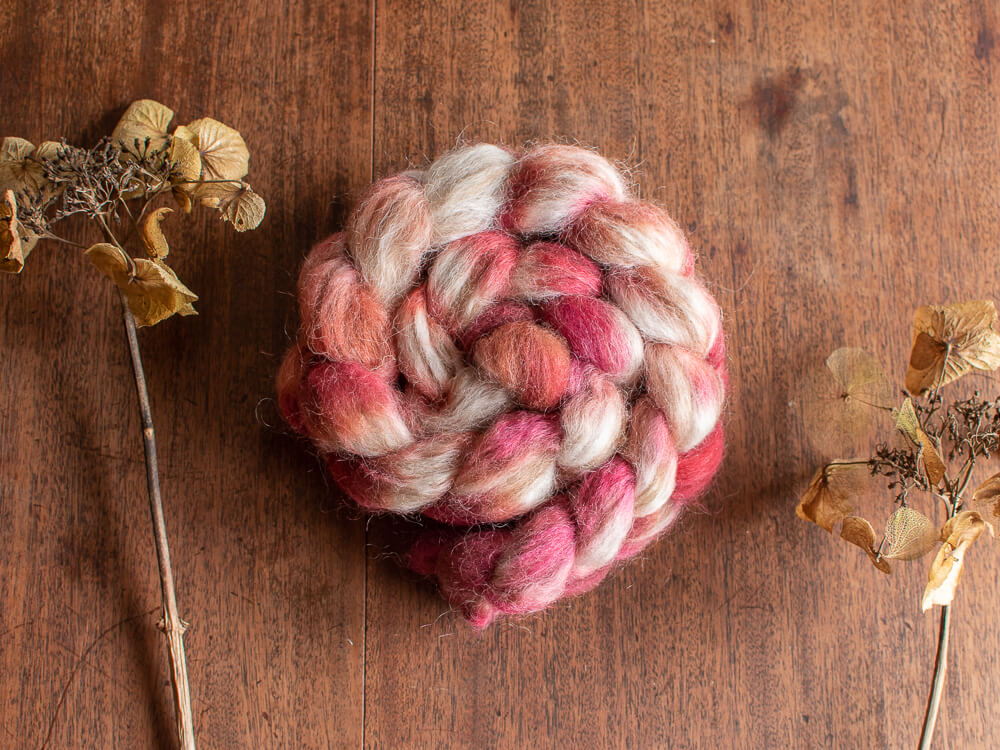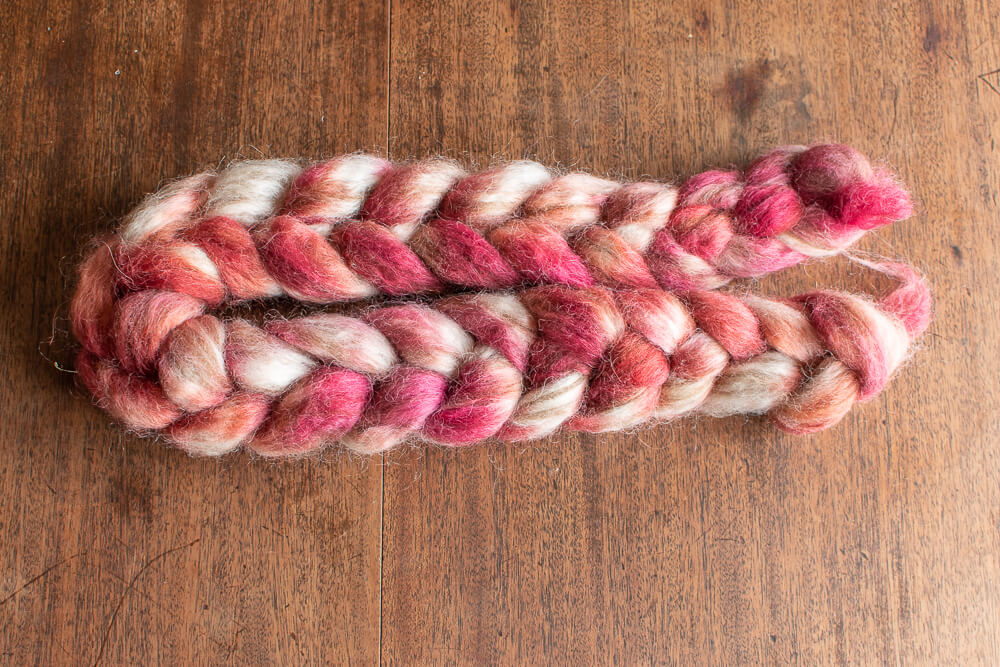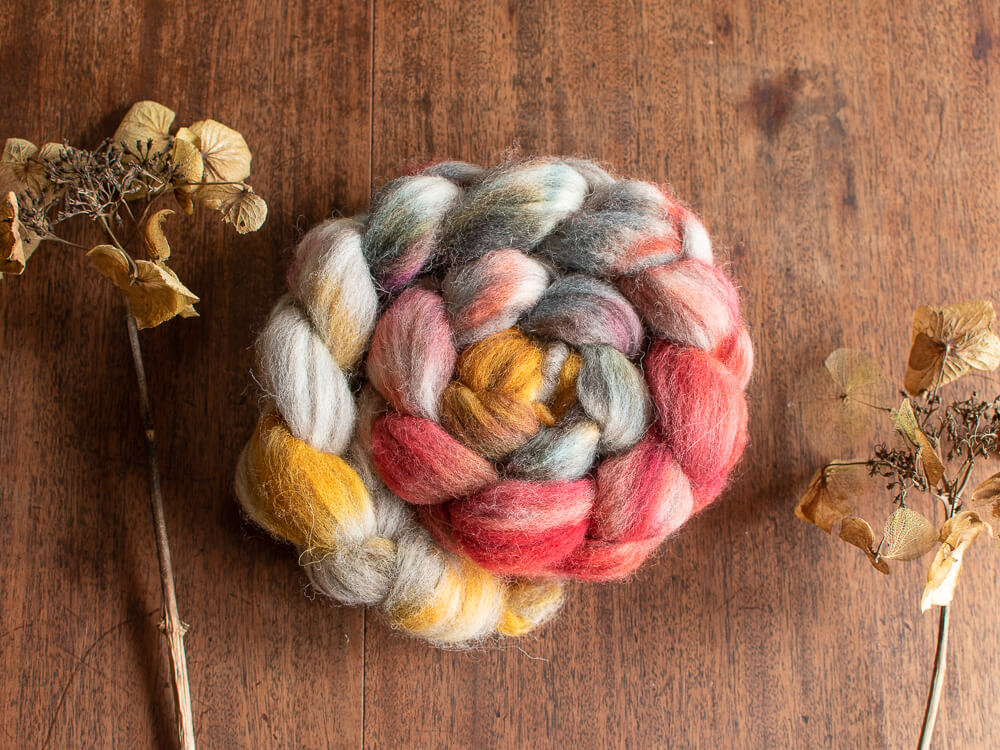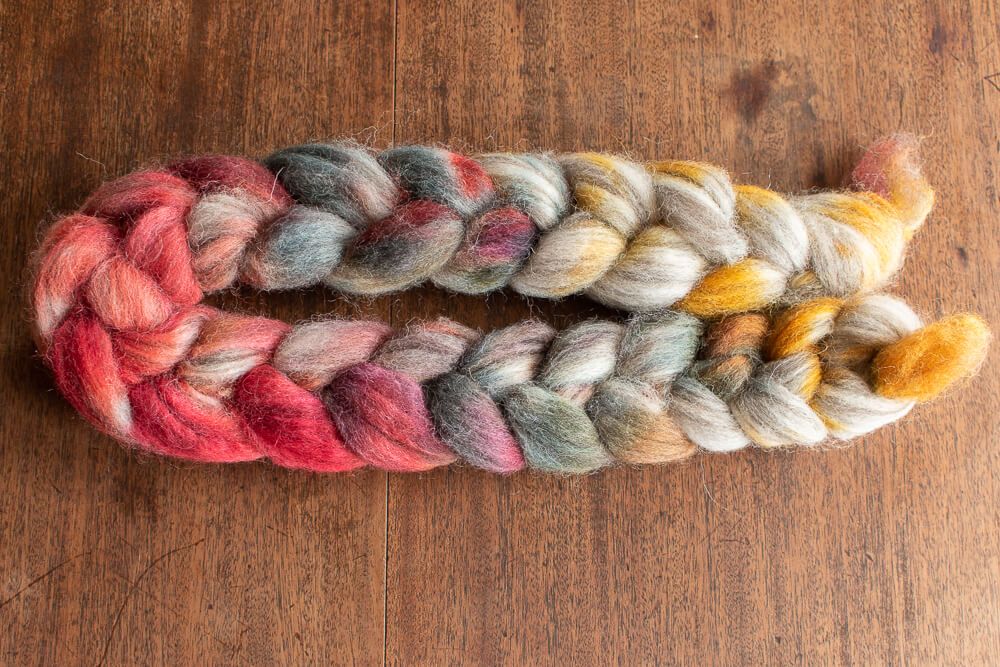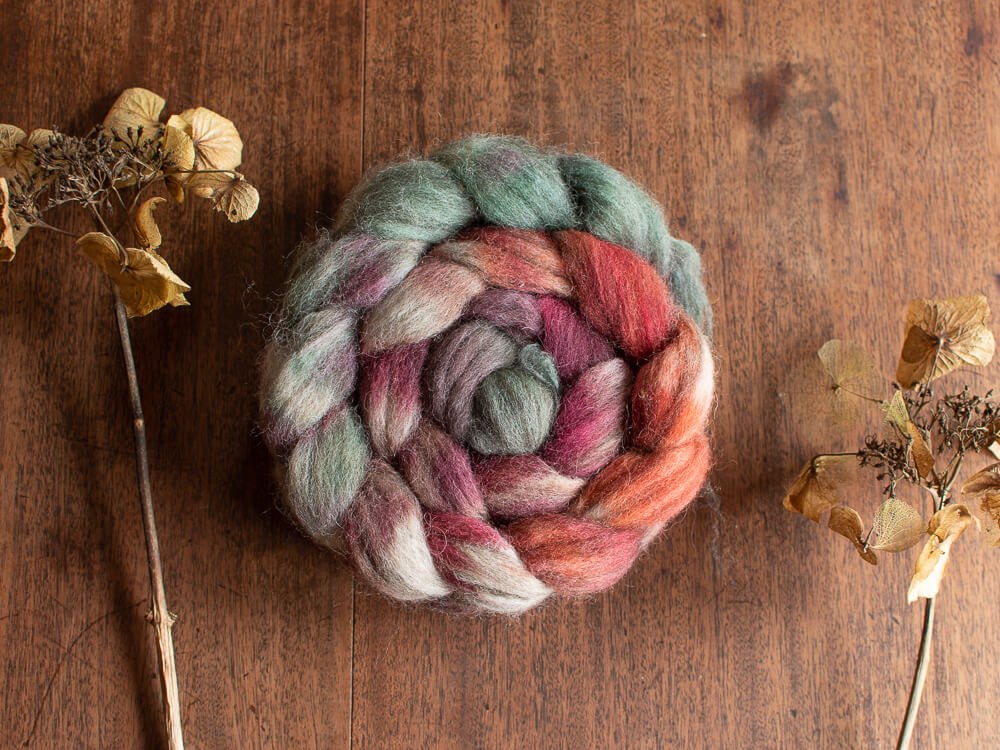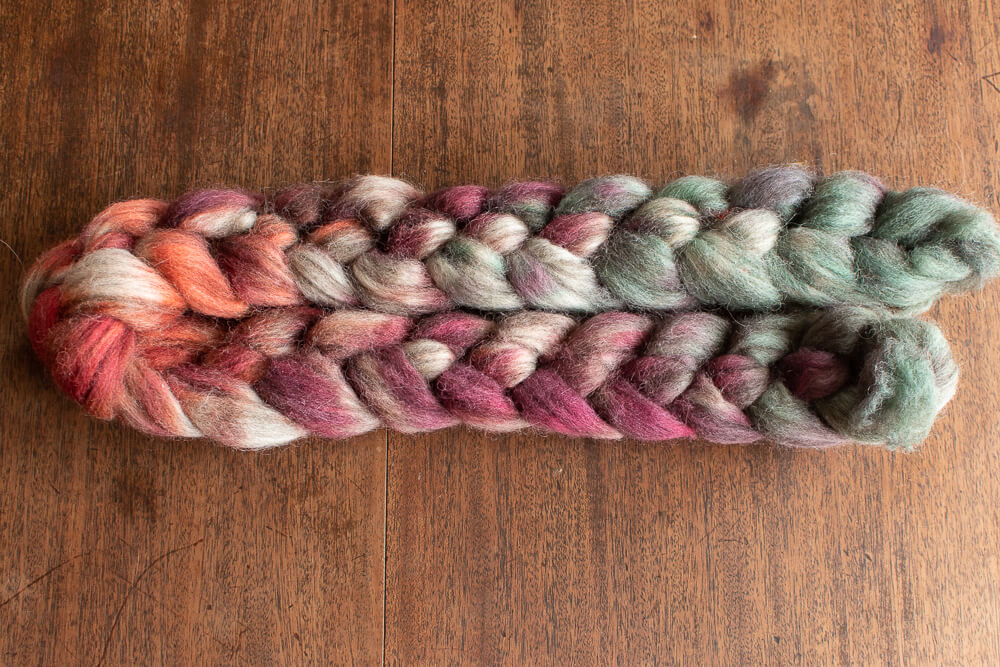I recently visited my grandparents in Devon and whilst there my grandma took me to her weaving group, which gathers at a studio on a small farm. It was lovely to meet the group and be able to discuss fibre and textiles with knowledgeable and interesting people, all with their own style and differing experience. Also on the farm was a small mixed flock of sheep; recently sheared, with some of their fleeces waiting in bags in the barn.
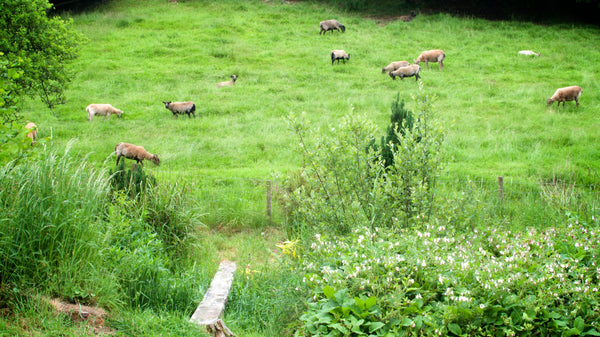
I picked a beautiful raw Teeswater fleece (a breed prized for their long, curly fleece) – very greasy and full of vegetable matter and dirt. It smelled as if I’d brought the whole sheep home with me! The fibre is beautiful, and I’ve begun work separating individual locks from the fleece and dyeing them in small batches; these are often used in spinning art yarn and creative felt making. I’m going to give a little overview on how I prepare the locks for dyeing, as it’s surprisingly time-intensive but very rewarding.

As the fleece is very long, the fibre gets slightly matted together about a third of the way from the bottom. First I pull a small section from the fleece and, working with a large piece of fabric or sheet of plastic on my lap, I separate the locks by very gently teasing apart the fibres, always ensuring that the curls at the tips remain intact. This has to be done delicately to make sure that as much of the fibre remains parallel as possible, to reduce fuzziness.

At this stage I also remove larger pieces of vegetable matter; any strands of grass or straw. I am then left with individual, but still quite dirty locks.

This fleece has a lot of lanolin (the ‘grease’ produced by sheep), which affects the texture, smell, and colour of the fibre, making it stiff, oily and yellow. To remove this I first do a couple of batch washes.
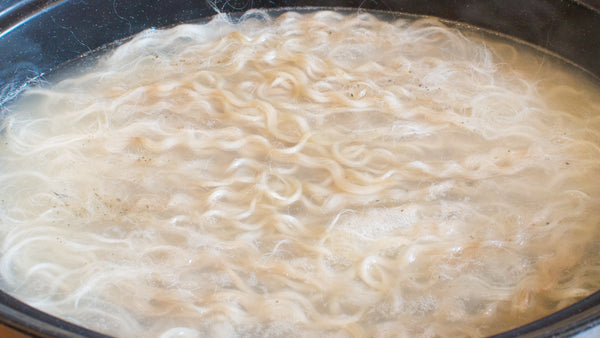
For the first wash I add the locks to a pan of plain warm water, and gradually heat to a high simmer over about half an hour. This is then left to cool, then drained in a colander (one reserved especially for wool!). For the second wash I use a wool scouring product in the water, again putting the locks in the pan and gradually heating to a simmer. Again it is then left to cool and drain. At this stage most of the lanolin is gone, but there is still some vegetable matter and fine grit left in the locks, as well as scouring agent, which must be removed.
I then fill the sink with hot water (as hot as I can comfortably put my hands in), and take the locks one by one and rinse out any leftover cleaning product and dirt. I gently separate the fibres in the water to allow the dirt to fall out, and change the water when it becomes too cool or dirty.

Once this is done the locks can be left to dry and then be used as they are, or dyed. I like to dye mine, as I love the way the colours turn out! I dye the locks in a pan on the hob, using one colour for the tips and one for the tails, creating a lovely gradient.
